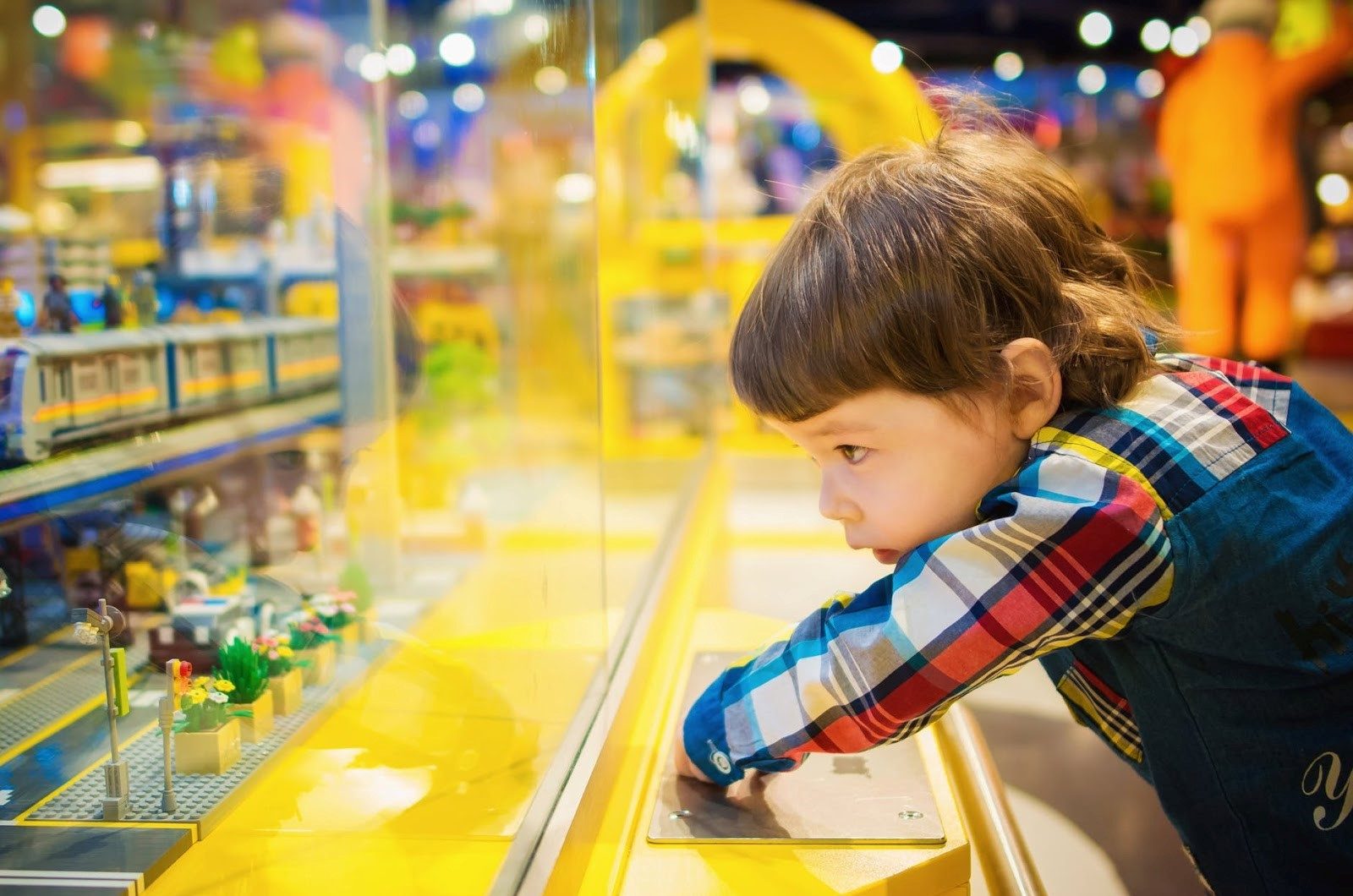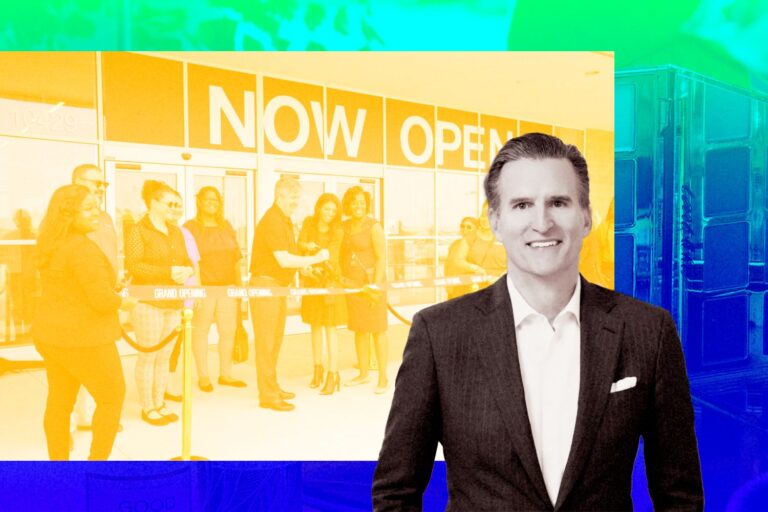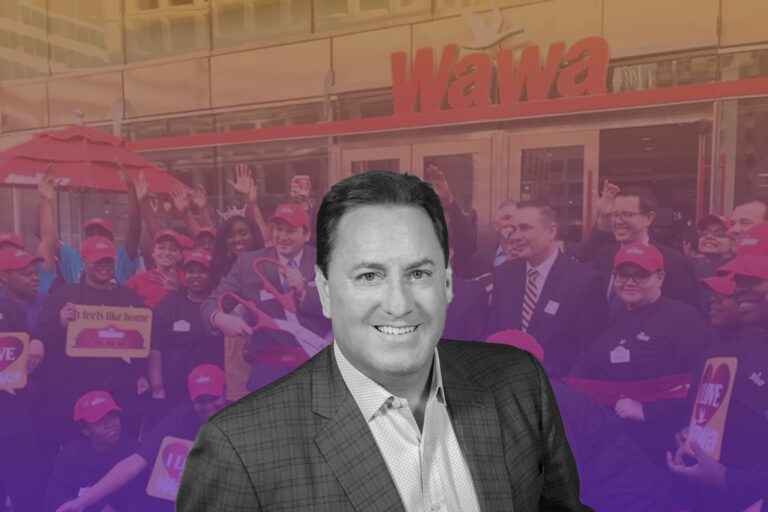Five Key Ways Physical Retail is Adapting to E-Commerce
“Toys ‘R’ Us, Big Kid on the Block, Won’t Stop Growing,” blasted a Wall Street Journal headline in 1988. But forty years later, Toys ‘R’ Us, once the world’s largest toy retailer, found itself wading deep in debt and were forced to shut up shop.
Amazon, the site behind probably the second richest man ever to have lived, is capturing that wealth instead – it’s cheaper, faster, entirely online. With rising rents, and intelligent software enabling better last-mile transport, online shops can hold more and cheaper products than their physical counterparts. In the UK, since the start of the year, 2,870 stores have closed down.
How are our high streets evolving?
#1. Retailers are opting for smaller spaces
Consumers are now moving away from big-box shops in favour of small format stores. These are faster, more compact and convenient places to buy. Toys ‘R’ Us’ small-format shops are roughly a third of the size of its traditional shop. Retailers tailor these smaller spaces to local needs by adapting their product portfolio to the specific items that would be most popular in that area. For example, Target shops in college towns would stock lots of college supplies like stationery.
#2. Retail as experience
Why are they doing this? It’s because the role of the shop is changing. Retail is a way of building your an experience where your product and target customer fit into a story. In a world where we interact with, discover and purchase so much online, brick-and-mortar shops need to get ahead by bringing shoppers more meaningful interactions.
Earlier this year, Toys ‘R’ Us announced their comeback, just in time for Christmas. They’ve teamed up with b8ta, a pioneering tech startup within the retail world. B8ta provides online brands with a platform — along with the software (‘Built by B8ta’) — to physically showcase their latest creations. B8ta’s test stores let shoppers see and feel innovative products in person. As a consequence, Toys ‘R’ Us are turning their stores into real playgrounds to test their newest toys. Kids can actively engage with the products, making a visible (and hence better) case for their parents to commit to a purchase.
Then, if they want, they can buy online.
#3. Retail as customer interface
This means that physical retail becomes a place to test products and talk to customers as well as to sell to them. Buying and selling works both ways. It’s a focus group, and a R&D funnel. The software gives brands real-time in-store insights into their products and consumer engagement with them.
Collecting user opinions on their product helps brands tweak their marketing strategies, display and the product design itself.
#4. The brains of stores are changing
Once upon a time, the kind of software which underpins an e-commerce company like Amazon weren’t available to the kind of scale we’d associate with physical retail. Part of the advantage of online is that they can scale indefinitely; the stores are impossibly big and with those economies of scale come advantages like centrally organised businesses through complex software.
But now, that’s possible through software built for smaller shops. Software like EPOS systems empower high street retailers, helping them to compete. Not only can store owners access the kind of business intelligence that would previously have been reserved for Jeff Bezos – but there’s systems for every kind of vertical, from clothes shops, to market stands.
Such bits of software permit stores to understand what’s working and what’s failing; and free up store owners’ time to learn things which could move the needle for their business – like online marketing. Some systems even introduce smart assistants like this AI assistant called Dott which does owners’ thinking for them. This could help equip store owners with the tools they need to fight the Amazon beast.
#5. Let Delivery Do what Delivery Does Best
Omnichannel means that shoppers have a unified experience across all the different ways they can buy from you. They can be shopping online from their phone, scrolling through your brand’s Instagram feed or wandering round a brick-and-mortar store.
It’s previously been really difficult for small merchants to simultaneously run their store and build the ability to do online stores as well. Today, hosted e-commerce platforms like Shopify and simplified payments providers like Stripe are designed to be easy-to-use; meaning that store owners can be store owners and online merchants with minimal effort.
Omnichannel offers customer benefits like click-and-collect and ship-from-store, that lower delivery times and costs, and boost in-store traffic and sales. A customer sees something they like in store? They can get it shipped to their home address. But the growing demand for e-commerce and delivery is putting pressure on last-mile logistics. What’s ‘last-mile’? This is the final step in the delivery process — all the way up to the buyer’s front door. Today, people expect faster and more flexible delivery. But this is causing a build-up on the roads. Bad news for our climate change crisis. Leaps forward in last-mile logistics are providing solutions.
#6. Delivering the Goods in New Ways
So what’s new about delivery? Amazon’s drone delivery service, Prime Air, may seem ideal for home deliveries, but there’s still a way to go before all households have the right infrastructure for them to be rolled out on a wider-scale. (Clue – it’s illegal to fly drones in dense neighbourhoods in most countries; and they can’t lift heavy boxes).
GPS is cutting out a lot of the hard work for delivery drivers. Many drivers now have GPS tracking software, which can design smarter routes based on traffic data. Companies can have a better idea of how demand is structured, how their customers behave, and how to adapt delivery systems to better serve customer needs.
Smart lockers situated close to people’s addresses cut the risk of a failed delivery, and means that you can drop off multiple parcels in one stop.
With the gradual migration from physical to online, retailers are rethinking how brick-and-mortar stores deliver the overall customer experience. There’s an optimal middle-way between the digital and physical — combining the power of ecommerce with the appeal of good, old brick-and-mortar.
So you might bring out a variety of fulfillment options like click-and-collect. Smaller-format shops will present a curated selection of items but also encourage online orders in-store. And while software is helping some big players; it lets small business owners thrive as they seize greater control over aspects of their store and branch out into the world of social and online marketing.









